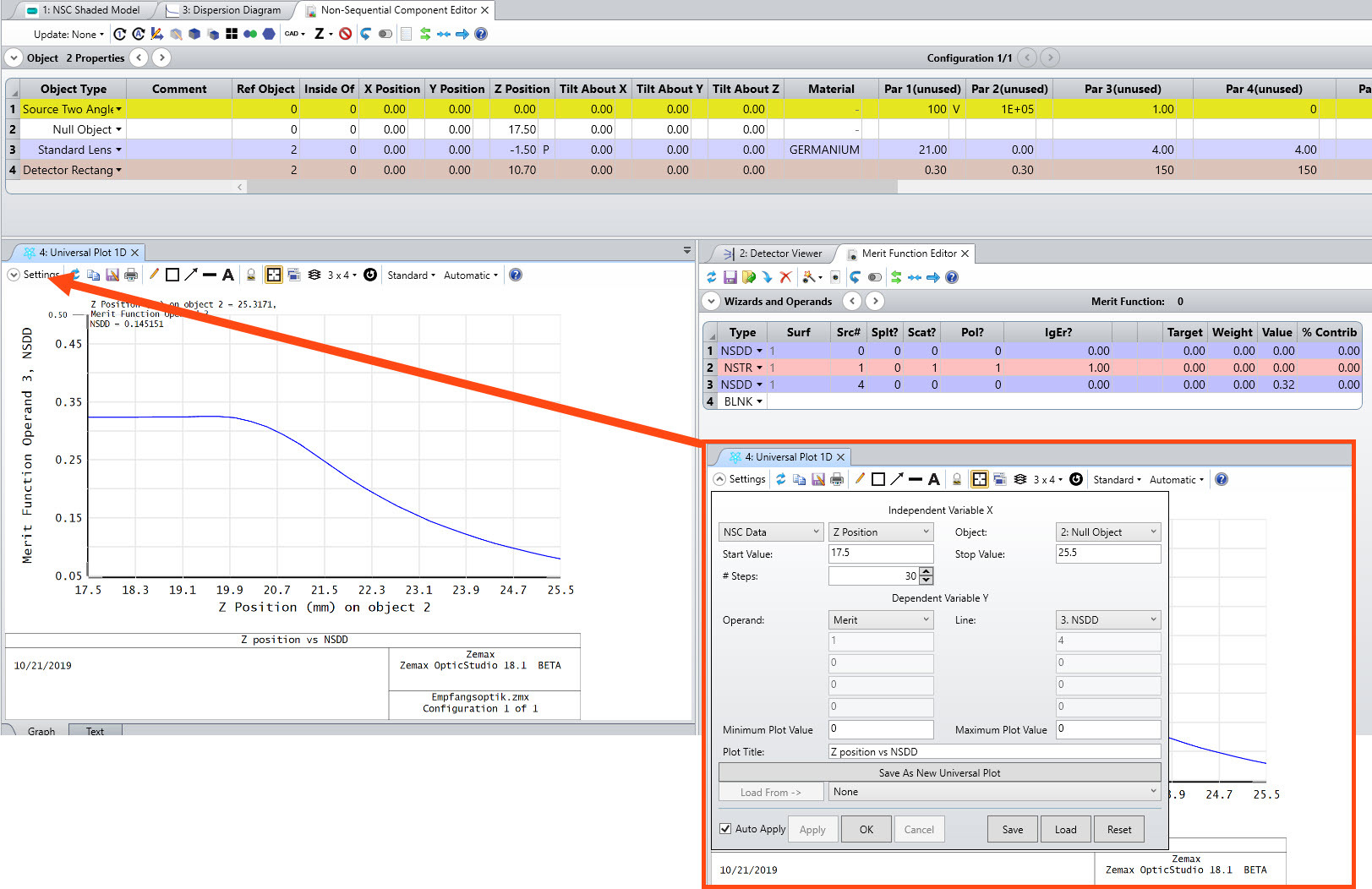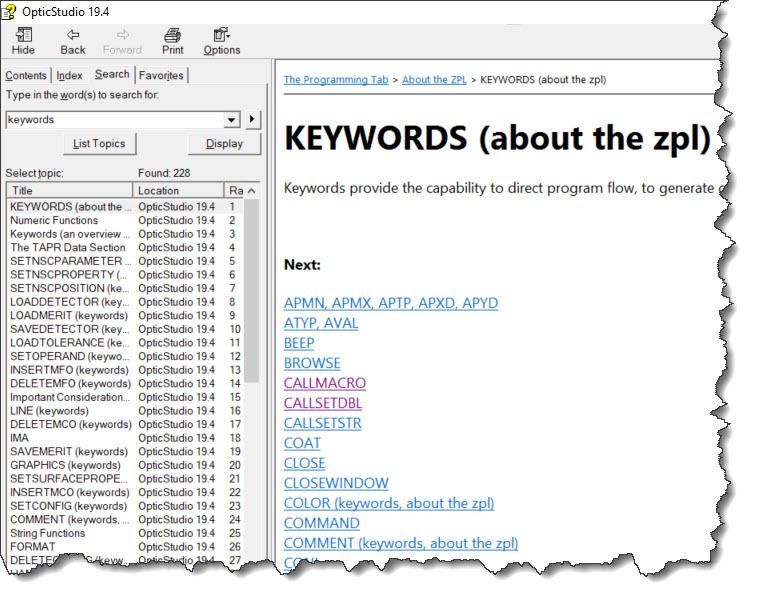Solved
How to make parametric simulation of non-sequential model.
Hello,
I would like to solve a parametric non-sequential model, where I change certain geometrical parameters.
At the moment I do this manually step by step, saving one model for every parameter setting.
I'm sure there is something that allows for automatic batch calculation of these parameters. Best would be to have all solutions in one model and the ability to switch between these results.
I know there are the options Slider, MC Editor or ZPL-Macros. However, In Slider I cannot set the increment between the parameter steps, which gives me way too much solutions I don't need and which take lots of time to calculate.
For MCEditor and ZPL-Macros I could not find any useful tutorial allowing me to learn these topics in rather short time.
I would really appreciate if someone could give me a starting point, how to solve this problem with a rather handy solution.
Thank you for reading,
Clemens
I would like to solve a parametric non-sequential model, where I change certain geometrical parameters.
At the moment I do this manually step by step, saving one model for every parameter setting.
I'm sure there is something that allows for automatic batch calculation of these parameters. Best would be to have all solutions in one model and the ability to switch between these results.
I know there are the options Slider, MC Editor or ZPL-Macros. However, In Slider I cannot set the increment between the parameter steps, which gives me way too much solutions I don't need and which take lots of time to calculate.
For MCEditor and ZPL-Macros I could not find any useful tutorial allowing me to learn these topics in rather short time.
I would really appreciate if someone could give me a starting point, how to solve this problem with a rather handy solution.
Thank you for reading,
Clemens
Best answer by David
If what you need is a numerical value, like one which could be calculated in the merit function, you could use Universal Plot under the analyze tab. This allows you to generate a graph based on varying a parameter with a prescribed stepping, and to obtain the data that the graph is based on. For more complex requirements I would use ZOS-API and Mathematica -- or Python, Matlab, C#, C++.
Enter your E-mail address. We'll send you an e-mail with instructions to reset your password.









